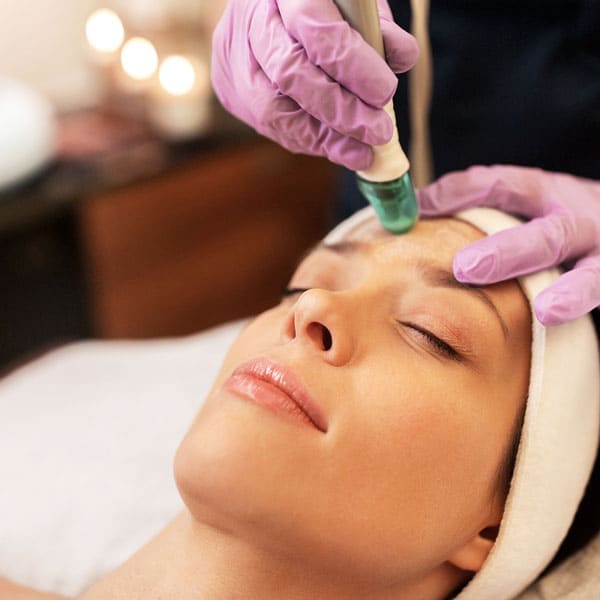
Chemical peeling: improve the appearance of your skin
El chemical peeling is a procedure that improves the appearance of the skin removing the top layers of it and encouraging the growth of new and healthy skin. If you wonder how a chemical peeling is a great way to increase your comfort with your appearance, improve the visible signs of aging, and correct blemishes such as acne scars, sun damage, or hyperpigmentation. He pilling Facial consists of applying a chemical solution on the surface of the foothe. The solution may contain phenol or another type of acid that causes destruction and sloughing of the outermost layer of skin when applied in controlled concentrations. There are many types of peels chemical for different types and degrees of rejuvenation. Let's look at each of them in more detail. Do not doubt contact us for any kind of query.
What is chemical peeling?
El chemical peeling is a technique using chemicals to remove the top layers of skin. The process of phenol peel causes destruction and desquamation controlled of the epidermis, and the desired result is the stimulation of new collagen production with the consequent improvement in the appearance of the skin. Chemical peels can be used to treat a wide range of skin conditionssuch as sun damage, acne, wrinkles, pigmentation and uneven skin tone. The most common types are peelings de salicylic acid, Glycolic Acid y lactic acid. Other types are the Jessner, TCA, phenol, CO2 and peelings laser assisted.

Advantages of chemical peeling
Many benefits of chemical peels, including reducing the appearance of fine lines, wrinkles and pores and overall skin radiance. They also reduce pigmentation and can help even out skin tone. Other benefits of this type of facial treatment are the increased collagen production and improvement of skin texture. In addition, the peeling treatment it is an excellent way to prepare the skin for facial procedures such as laser treatments or surgery.
Disadvantages of facial chemical peeling
Although chemical peels can be very beneficial, they also have some drawbacks. For example, they can be somewhat painful and they are more likely to cause scarring than other types of skin treatments. Also, they are not recommended for certain skin types. But don't worry, in Río-Hortega Clinic a specialist will make a personalized prior consultation to find out your skin type and guarantee natural results without side effects.
Different types of chemical peel
Numerous types of chemical peels, each of them is focused on following a technique that significantly improves the appearance of the skin. Improving its texture, reducing acne marks and fine wrinkles. It also helps to remove facial blemishes caused by photoexposure. Peels can be shallow, media o deep and, as we have already mentioned, they depend on the type of skin you have.
1. Exfoliation with salicylic acid
This is the most common type of chemical face peel. It is cheap, it is not toxic and it does not cause scars.
2. Exfoliation with glycolic acid
It is another very common type of chemical peel. It works by increasing cell renewal and can be used to treat various skin conditions. This is not recommended for rosacea skin
3. Jessner's Peel
It is a combination of salicylic acid, lactic acid, and other chemicals. It is used to treat acne and wrinkles.
4. Phenol Peel
El phenol peel it is very effective but extremely harmful. It is only used in extreme cases, such as severe acne.
But Río-Hortega Clinic you will find the following treatments of pilling:
- Peeling Flash effect: special for special events and parties.
- Treatment Peeling.
- Phenol peeling.
What is the price?
El chemical peel price or chemical peels varies depending on the type of peel being performed, the number of treatments required, and the qualifications of the esthetician administering the procedure.
How long does the chemical peel last?
El chemical face peel is a great way to improve the appearance of your skin. But how long does the effect last? chemical face peel? The effects last between 2 and 6 months. This is because the pilling it changes the top layer of the skin, but does not change the deeper layers. It is a process that removes the top layer of skin to reveal a fresh, new layer.
How long does it take for my skin to recover after the procedure?
The skin can take between one day and two weeks in recovering. Recovery time will depend on the amount of chemical peel used and the type of chemical used. Un postoperative chemical peel is when you undergo surgery and immediately afterward, a chemical peel to help with healing. This is generally not recommended because it can slow the healing process at the surgical site. Recovery time from a chemical peel varies from person to person, depending on the type of peel and the depth of the chemical. Generally, it takes about two weeks for the skin to recover.
Conclusion
All the chemical peels they are a great way to improve the texture and appearance of the skin. This is especially true for aging skin, as the facial peels They can help improve fine lines and wrinkles. They can also help even out skin tone, making it brighter and more radiant. If you are interested in improving your skin but want to try different options, a chemical peeling may be the right option for you. They are affordable and effective, and can help you get glowing, beautiful skin right away. We invite you to visit the website of DNA World, so you can see the recommendation they make of our treatments.
Come meet us
En Río-Hortega Clinic you can find different specialties designed to cover the complete care you need. Always hand in hand with the best experts in their sector. A variety of services that you can trust, and professionals that will make you feel at home. At our clinic we love to offer you the best services and help you get the best results.
Contact us, fill out the form, and we will help you with all the tools in our hands. You can book your appointment by phone / WhatsApp 648 116 134, or write to info@clinicadelriohortega.es. We are at C/ Almirante Antequera 34, Santa Pola, Alicante.








